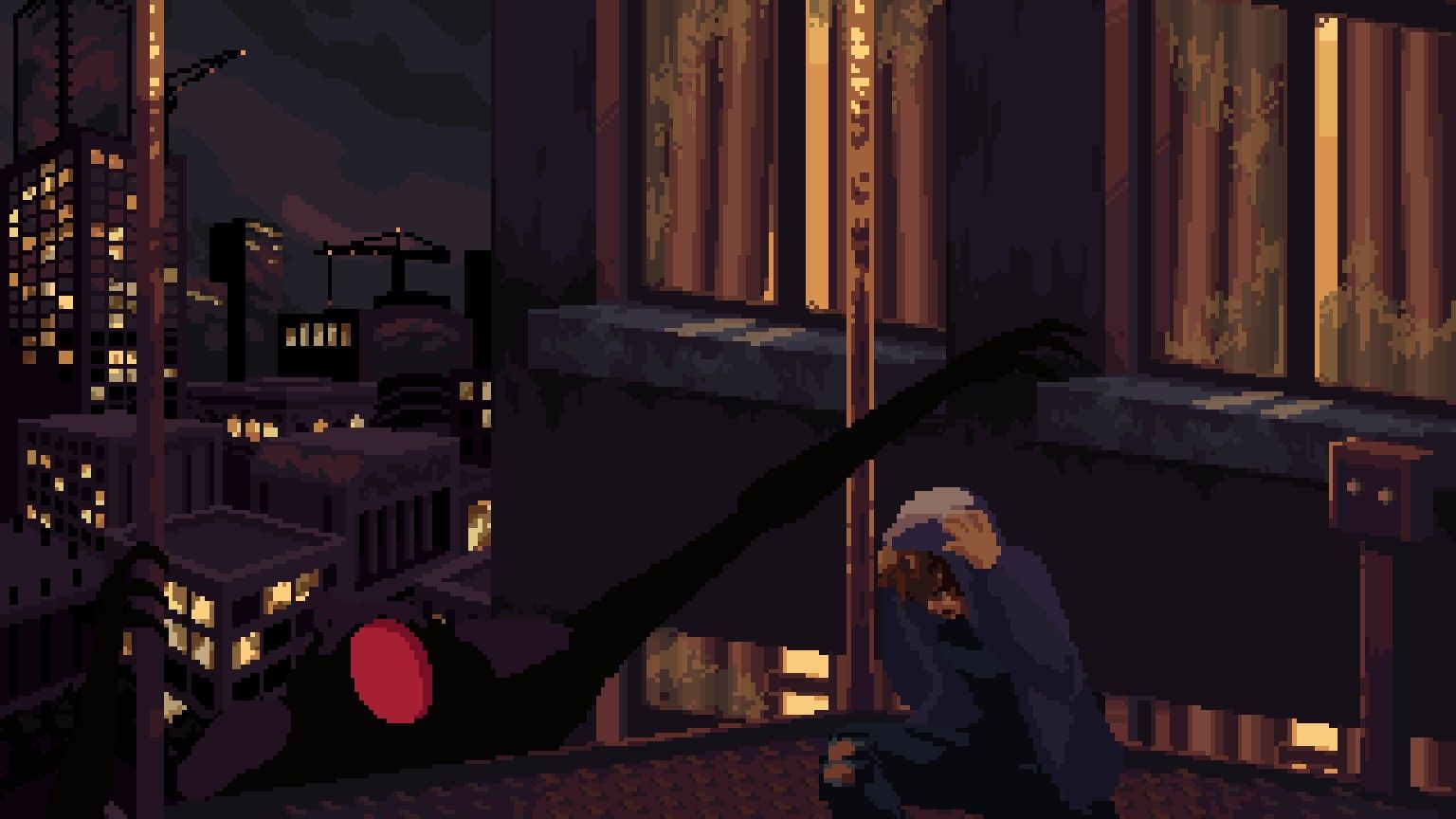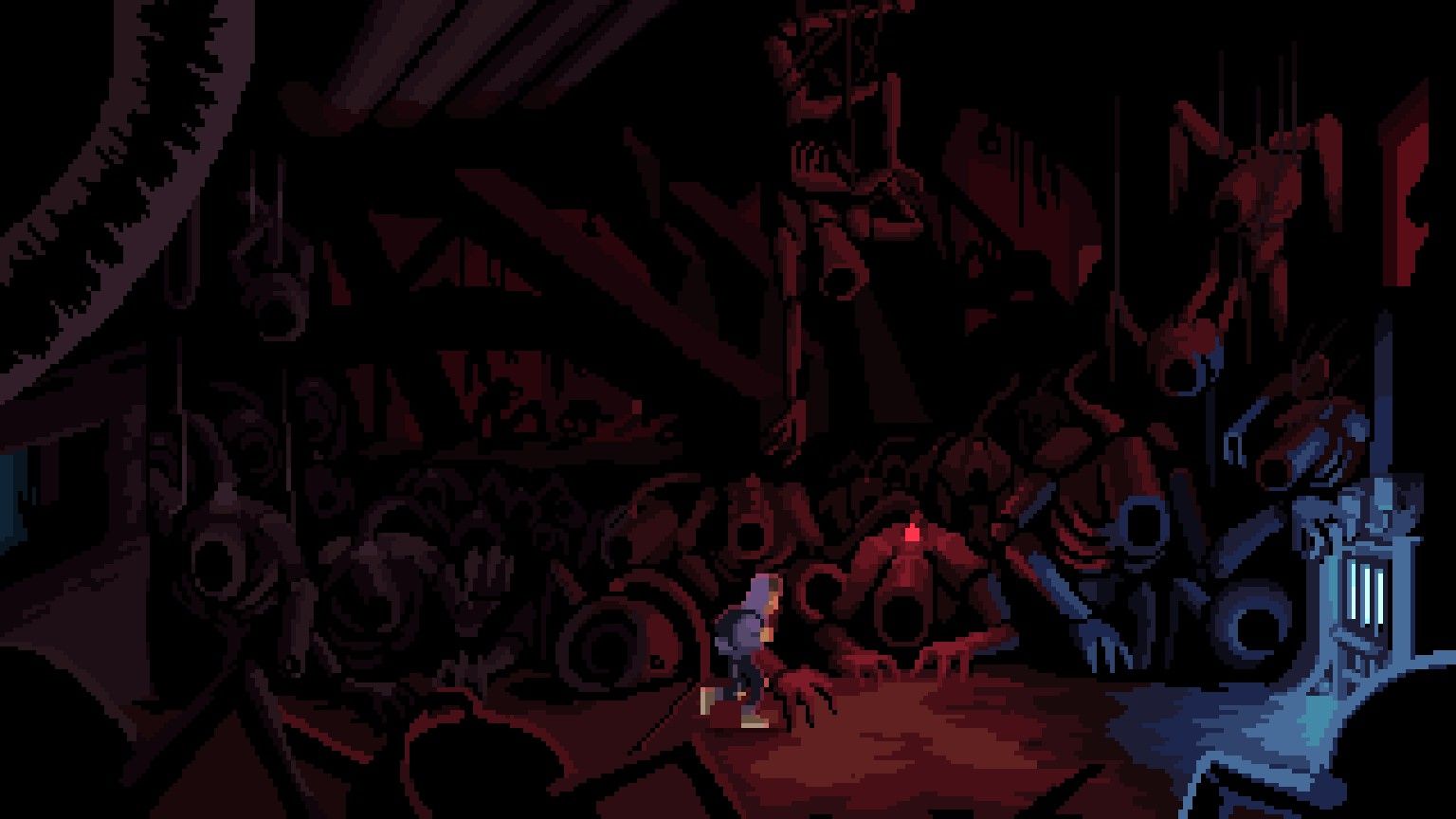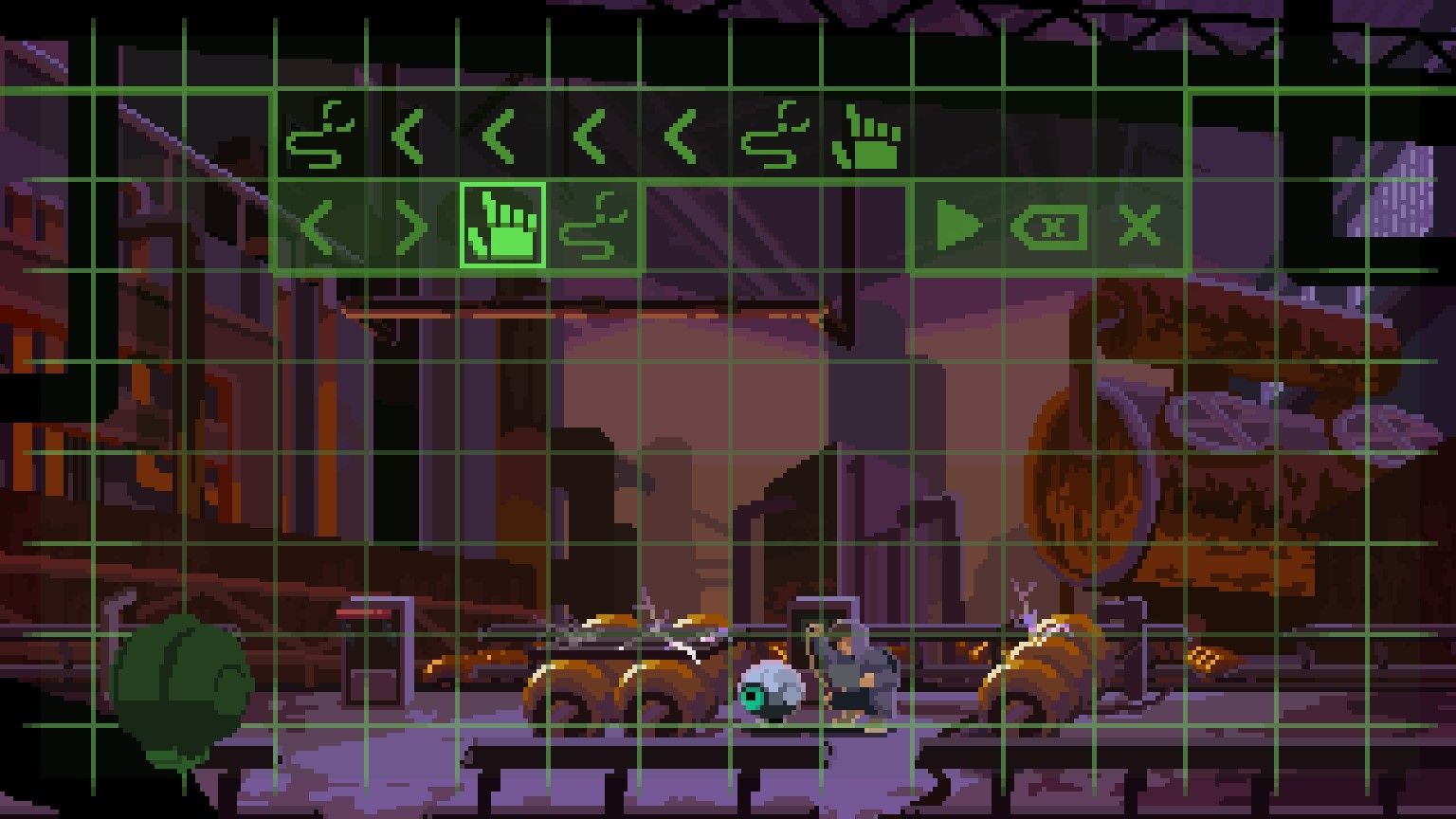Full Void: A Child Lost in the Darkness
Minimalist story-driven horror adventure awaits

Cinematic elements in video games go back a lot farther than people might think. One could argue that it started with Out of This World, one of the ur-indie games. In the decades since many developers have strived to create games that tell complex stories primarily through visuals.
Enter Full Void, a game that descends directly from that cinematic bloodline. Using intentionally limited graphics, this game proves that capable developers can create an immersive atmosphere without the need for a flashy presentation.

The city is dead, and the murderer has gotten away with it. The sky is an unnatural color and the streets are eerily silent. Only the occasional silhouette in an apartment window - an image of a person hooked up to strange machines - suggests that there is life here at all. But those people have good reason to stay inside, for the streets are owned by bestial biomechanical horrors that drag people away to uncertain fates. These creatures spill out of an abandoned office campus, one that occasionally flashes an ominous red light to suggest that some even more dire horror is happening within.
There is one person out on the streets, though - an adolescent boy on an unknown mission. Against all odds, he's attempting to evade the creatures as he heads for that office campus. But what lurks inside those buildings will make the dead streets seem like a safe haven.
As with Daydream: Forgotten Sorrow, Full Void keeps its plot intentionally vague. There is no dialogue, so the player has to pick up on the story through imagery and the occasional silent flashback. The only thing that's clear from the start is that something very bad has happened.

Full Void is a game that is both visually and mechanically inspired by titles such as Out of this World and Flashback. As with those games, this is a platformer on paper but it has little in common with the precision platformers usually associated with the genre. It is more of an adventure title, with the gameplay loop built around discovery.
The main character has a few basic abilities he can use to navigate the world. He can jump, crawl, hang from ledges, and push or pull certain objects. In certain areas, he can also program various machines (including a shapeshifting drone he finds about halfway through) to help solve puzzles. Combat is not part of his repertoire, and he can't run particularly fast, either. The only real way to deal with enemies is to avoid them, which adds some quasi-stealth elements to the game.
Most of the challenges are timing-based, with the protagonist needing to avoid obstacles such as steam and fire by carefully slipping past them. There are also a handful of puzzles, most of which are pretty straightforward though they do get a little bit more complex near the end.

But as with most games of this type, the mechanics are there to serve the story. The lack of text means that the entire story is environmental, told through images that are bizarre and often disturbing. The world is full of cadaverous decommissioned robots, abandoned biological experiments, and sprawling dystopian factories, all of which are made even creepier through the grain of the low-depth color palette.
That imagery is what's going to drive a game like this. The mechanical challenges can be frustrating at times, but it's worth pushing through them to see what's going to pop up on the next screen. Whether that's a library haunted by a massive worm-like biomechanoid or a corporate daycare center watched over by the beast-like robots that have been stalking you the whole game, the horrors await discovery.
Full Void isn't going to offer much for fans of precision platformers, but it's definitely worth a look for anyone who has an interest in story-driven titles.
